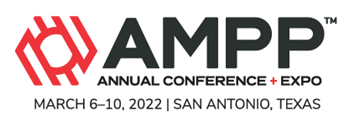Search
Online Conference Paper
View as
Sort by
Display
per page
Autonomous Healing of Smart Coating Materials for Corrosion Protection of Oil and Gas Assets
Product Number:
51324-20901-SG
Publication Date:
2024
$40.00
Avoid Potential Repeated Failure (Cracked Gas Compressor line) Through Proper Material Assessment
Product Number:
MPWT19-14239
Publication Date:
2019
$0.00
Balancing the Performance and Robustness of Epoxy Intumescent Coatings
Product Number:
51324-20661-SG
Publication Date:
2024
$40.00
Benchmarking International Cathodic Protection and Alternating Current Mitigation Standards to Determine Suitable Protection Criteria
Product Number:
MECC23-20206-SG
Publication Date:
2023
$20.00
Benefits of continuous corrosion monitoring for offshore wind structures
Product Number:
51323-19288-SG
Publication Date:
2023
$20.00
Benefits of using zinc-rich primers in offshore environments
Product Number:
51323-18932-SG
Publication Date:
2023
$20.00
Bio Fuel Feedstock and Finish products – Linings Case Study
Product Number:
51323-18898-SG
Publication Date:
2023
$20.00
Biocide Compatibility with Oxygen Scavenger: A Case Study from Oil Field
Product Number:
51323-19112-SG
Publication Date:
2023
$20.00
Biocide Resistance in Microbes – An Oilfield Example
Product Number:
51323-19122-SG
Publication Date:
2023
$20.00
Biocide Selection Score Card: A Numerical Approach to Product Selection
Product Number:
MECC23-19919-SG
Publication Date:
2023
$20.00
Biocide Storage Tank Internal Corrosion And A Mitigation Strategy – A Case Study
Product Number:
51322-17906-SG
Publication Date:
2022
$20.00












